The Daily Escape:
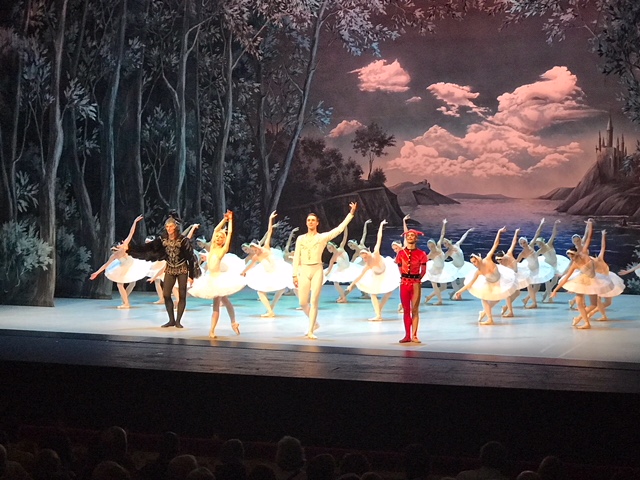
Swan Lake, by Tchaikovsky, performed on September 26, 2018 at the Alexandrinsky Theater, St.Petersburg – iPhone photo by Wrongo. Russians didn’t like the original ending of the ballet, where Sigfried and Odette die, so in their preferred performance, Sigfried and Odette live happily ever after.
A few random thoughts about the US and Russia: We often forget that all countries have their own history, all of which is ongoing in parallel to our own:
- America’s colonial history was underway while Russian history was being written. For example, Wrongo’s home town was founded in 1709 on the banks of the Housatonic River. By 1720, the town was a rough collection of small farms, churches and commercial buildings, connected by dirt roads to other towns in Connecticut and New York, but it depended upon the Housatonic for connection to the sea, to the old world, and to the rest of the new world colonies.
- In 1703, Peter the Great founded St. Petersburg on its current site. He built the city with conscripted peasants, starting by reclaiming the marshlands on both sides of the Neva River. Tens of thousands of serfs died while building the city. The Neva was important, because it was Russia’s only ocean port, their connection to the rest of the world. The land around St. Petersburg was ultimately raised by nearly 10’. It became the capital of Russia in 1712.
- We all know that President Lincoln freed about 4 million slaves in the US in 1863. In 1861, Tsar Alexander II freed 23 million Russian serfs, who also were slaves.
- Alexander had to pay compensation to the nobles who had lost their supply of free Russian labor. In 1867, he raised the necessary funds by selling Alaska to the US for $14 million.
Now, a few observations about Russia today.
Below is a photo of the Obukhov State Plant in St. Petersburg. It makes surface-to-air (SAM) missile systems, including the world-famous Russian S-300 and S-400 air defense systems that are employed around the world including in Syria and India. The S400 system will soon be in the hands of our somewhat belligerent ally, Turkey. Wrongo was told that it is currently subject to the US sanctions regime, although he couldn’t immediately find it on the US Treasury’s sanctions list. Here is Wrongo’s iPhone photo of the missile plant:
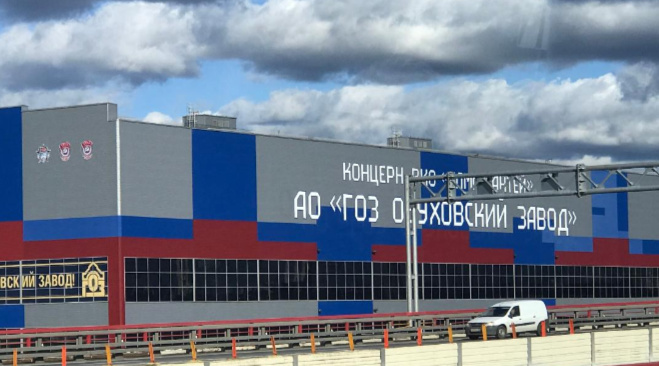
Why does the US place sanctions on a state-owned arms manufacturer in Russia? Russia is #2 to the US in global arms sales, and we can be sure that if Russia sanctioned Honeywell or Northrup, we would be screaming that they had no right to interfere in our commercial relations with other countries.
Next, everyone knows that the legendary Hermitage, formerly the Winter Palace, has an amazing art collection. The collection was started by Catherine the Great in 1764, when she purchased 255 paintings from the city of Berlin. Today, the Hermitage houses over a million works of art. It is a truly remarkable museum to visit.
So imagine Wrongo’s surprise when he noticed many paintings had been marked with an inventory control number, painted on the visible canvas! Inventory control numbers routinely appear on the back of paintings, but to see numbers, painted in red, on the canvas itself? Here is an example of what Wrongo saw:
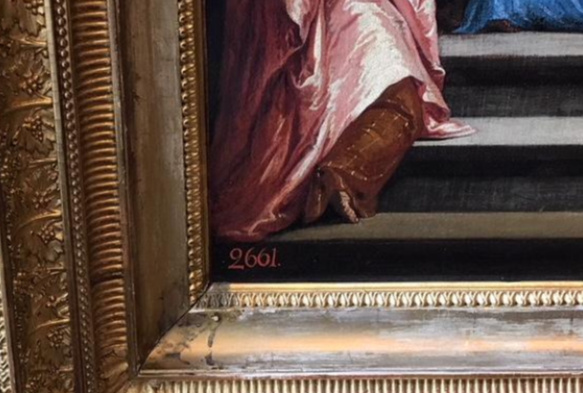
Is this desecration of an art work by an overzealous Bolshevik accountant? Did the powers that be eventually discover the error of their ways? Most likely yes, because only relatively few paintings from the 15 and 16th century were marked, but all seemed to be in the same script. Wrongo asked several people if the red numbers interfered with their enjoyment of the painting, and none said it did, but it sure did piss off Wrongo.
Perhaps it’s simply a different way of looking at things. Like how each country views the Syrian president: is he a tyrant, or the savior of his people?
So wrapping up, based upon Wrongo’s observations, we have many similarities with the Russian people, and a few similarities with their government.
Of course, each country has an easy-to-criticize bureaucracy. Ours wouldn’t paint numbers on oil paintings, but it will happily perform other desecrations without being asked.
Geopolitically, we have voluntarily placed ourselves in a competition with the Russian state. We have been directly competing since the 1940’s, and it hasn’t delivered either side a more secure homeland, or world.
Instead, it has positioned us on opposite sides in many third world countries. It has made our defense contractors very rich, while causing the deaths of many young people in America’s military.
Wake Up! It’s way past time for both countries to re-think this competition.

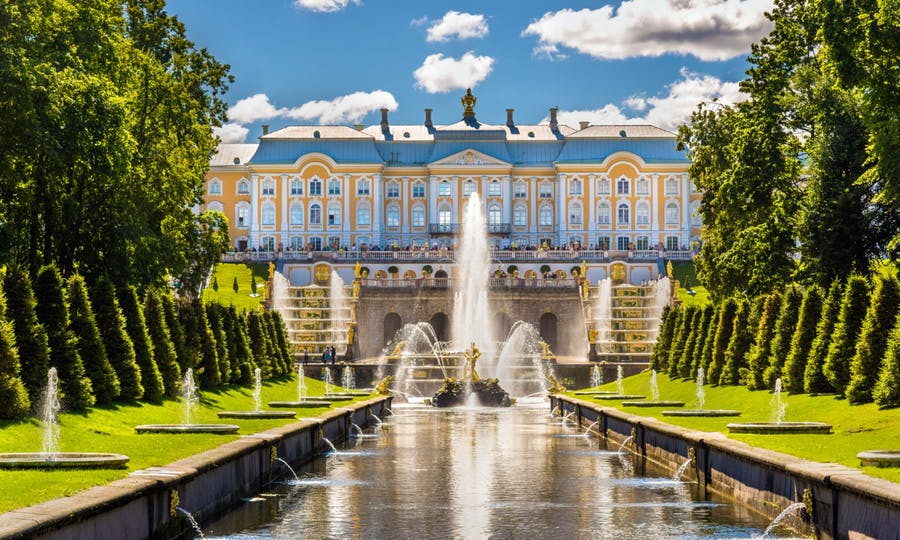
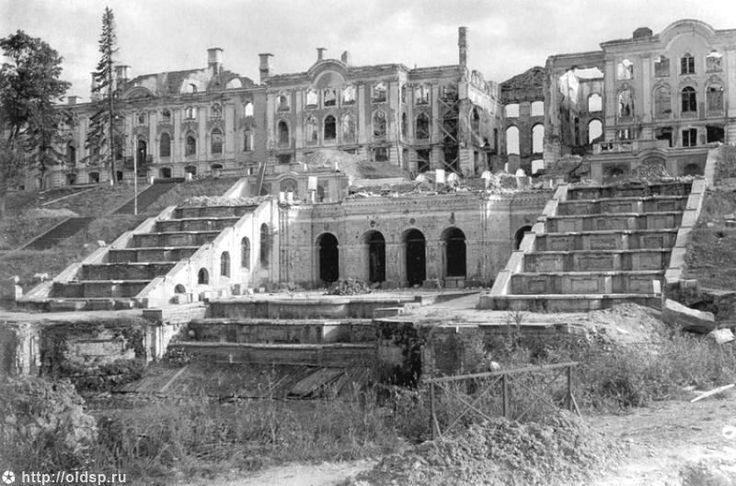
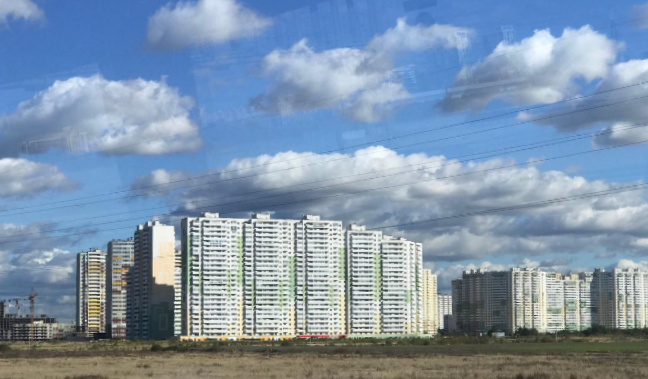 In speaking to our guide, a grandmother, she expressed two concerns that we in the US can easily understand. Her 12-year-old grandson spends most of his time looking at a screen that he holds in his hand. She asked him, and he has no idea who Lenin was. She says that her grandson’s generation only knows the “Lennon” of the Beatles.
In speaking to our guide, a grandmother, she expressed two concerns that we in the US can easily understand. Her 12-year-old grandson spends most of his time looking at a screen that he holds in his hand. She asked him, and he has no idea who Lenin was. She says that her grandson’s generation only knows the “Lennon” of the Beatles.